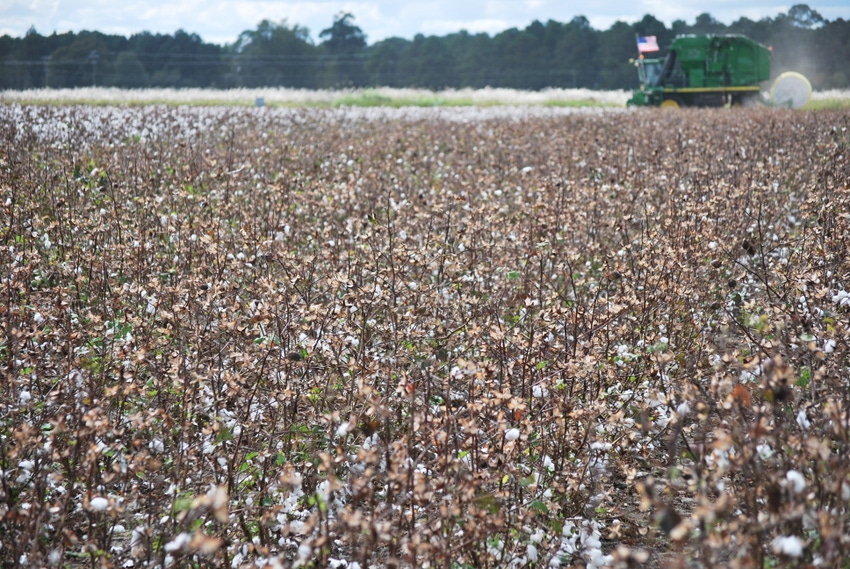
As an Extension specialist, I am frequently asked to visit with county agents, consultants and farmers as cotton, corn, soybeans and peanuts are harvested. Rarely am I invited to marvel at an outstanding crop or to help celebrate record-breaking yields.
Usually I am called because a problem has become evident and the grower wants to know what caused the problem, why the problem occurred, and what can be done so that it doesn’t happen again.
I am always warmly received by growers as I accompany Extension agents to the field; however there may be little enthusiasm as my presence indicates a yield loss. I recall an article I read not too long ago titled “If rock star weatherman Jim Cantore comes to Florida for Irma, we know it's serious.” No one is excited to greet Jim Cantore. When Jim shows up in your neighborhood, it is time to leave and pray for good homeowner’s insurance. Unlike Jim Cantore, I am not a rock star, but I can imagine how he feels. Guys in our jobs are called out when things aren’t going well and are fixing to get worse.
While it is possible to diagnose a problem late in the season, reaching back in time to explain why the problem occurred is problematic. Sometimes the problem and cause can be readily identified. For example, recently I was able to tie low peanut yields to a short rotation, loss of leaf spot control and unexpected delays in digging.
In another instance, cotton yields plummeted after a grower planted a bacterial-blight resistant variety, but took no actions to protect against root-knot nematodes. While both of these farmers suffered significant financial loss, the “silver lining” is that very effective remedies are available for the next time peanuts and cotton are planted.
What’s the cause?
Cause is more difficult to determine where diseases or nematodes are obviously problematic, despite the grower’s best efforts to manage them. A peanut grower may deploy a seemingly appropriate fungicide program and still suffer at the hand of white mold or a cotton grower sprays for target spot and still observes significant premature defoliation. When control fails to measure up to a grower’s expectations, it can be difficult to fully explain why.
In some situations, the pest pressure may have simply overwhelmed the management program as occurs when a combination of short rotations, unfavorable weather and susceptible varieties overlap. Too much (or too little) rain may seriously damage a good peanut fungicide program. A grower’s expectation for “perfect” control may be unrealistic. In cases where a program did not provide expected results, it is my job to offer adjustments for next season. Recommendation may include longer rotation, planting a different variety and use of a more aggressive fungicide or nematicide program.
Most difficult is when yields are lower than expected, despite use of proven management practices and where no clear cause is evident. In 2017, some peanut farmers have been frustrated by numerous pods left in the ground and unexplained deterioration of the pegs. As one county agent noted, “You get to harvest and all of the pegs fall apart. No white mold. No Diplodia. No Tomato spotted wilt. We’ve heard rumors about lesion nematodes. I’ve already had four calls today about this and I don’t have any good answers.” In another case, a grower noted that pods expected along the limbs of the plants never developed. In Florida, peanut fields have been reported to “collapse” with significant yield loss and no clear cause.
Some cotton growers realistically anticipated 3-bale cotton throughout the growing season and then struggled to pick 1,000 pounds per acre. I have heard the same comment again and again. “I just want to know went wrong. If I made a mistake, tell me.” Added one cotton grower, “Bob, I can afford to try this one more year. I’ve got to get it right. If not, I’ll have to do something else.”
Frustrating 2017
The frustration felt by the grower at harvest is compounded when the reason for the loss is elusive. It becomes even worse if growers feel their concerns and observations are dismissed too easily. In the absence of a clear tie to a disease or nematodes, yield losses can be linked to a combination of factors, to include variety, weather, and implementation of all production practices. Given the tremendous increases in yield potential in many crops and corresponding increases in production costs, growers are understandably anxious.
I do not like it when I can’t give a definitive answer, but a carefully researched solution is better than a “quick fix.” In reference to 2017, no, I don’t think Georgia-06G is “playing out.” Yes, bacterial blight is important, but root-knot nematodes are more important. I stand behind timely applications of fungicides on corn, cotton and soybean crops and nematodes on all crops deserve greater attention from farmers and university researchers. And yes, weather this summer was often too cloudy and wet sometimes and too hot and dry sometimes to make a record crop.
Like Jim Cantore ahead of a storm, my presence is needed out of concern for a problem. But like him, we in Extension are grateful to be of service and even more grateful that our farmers seek answers from our Extension programs.
About the Author(s)
You May Also Like






